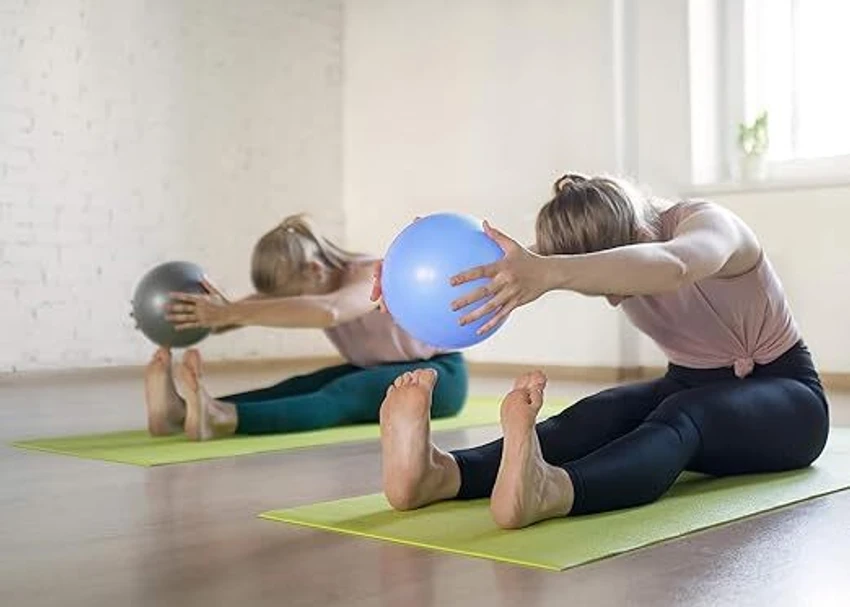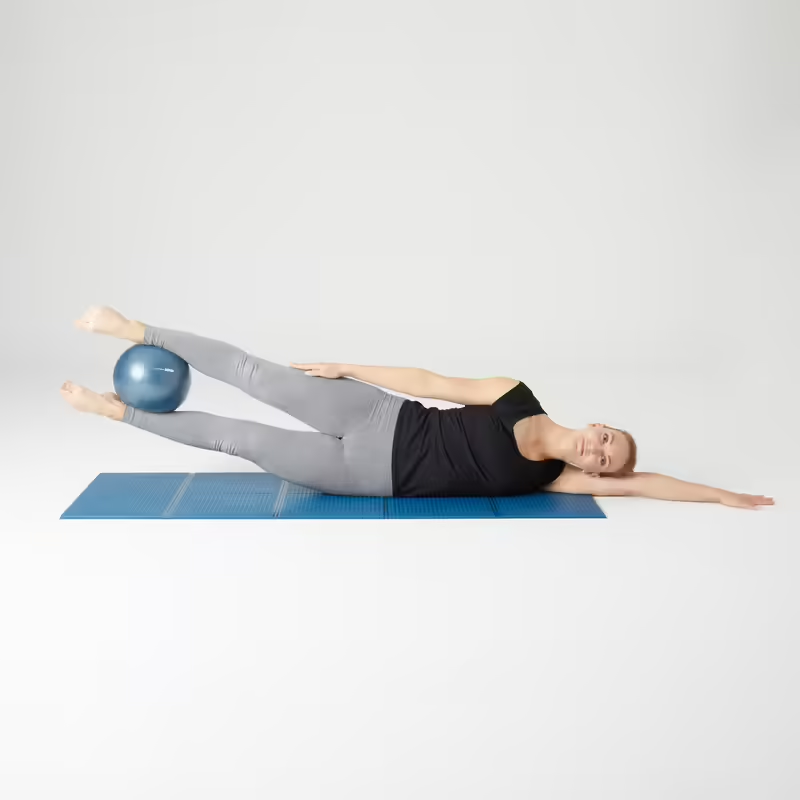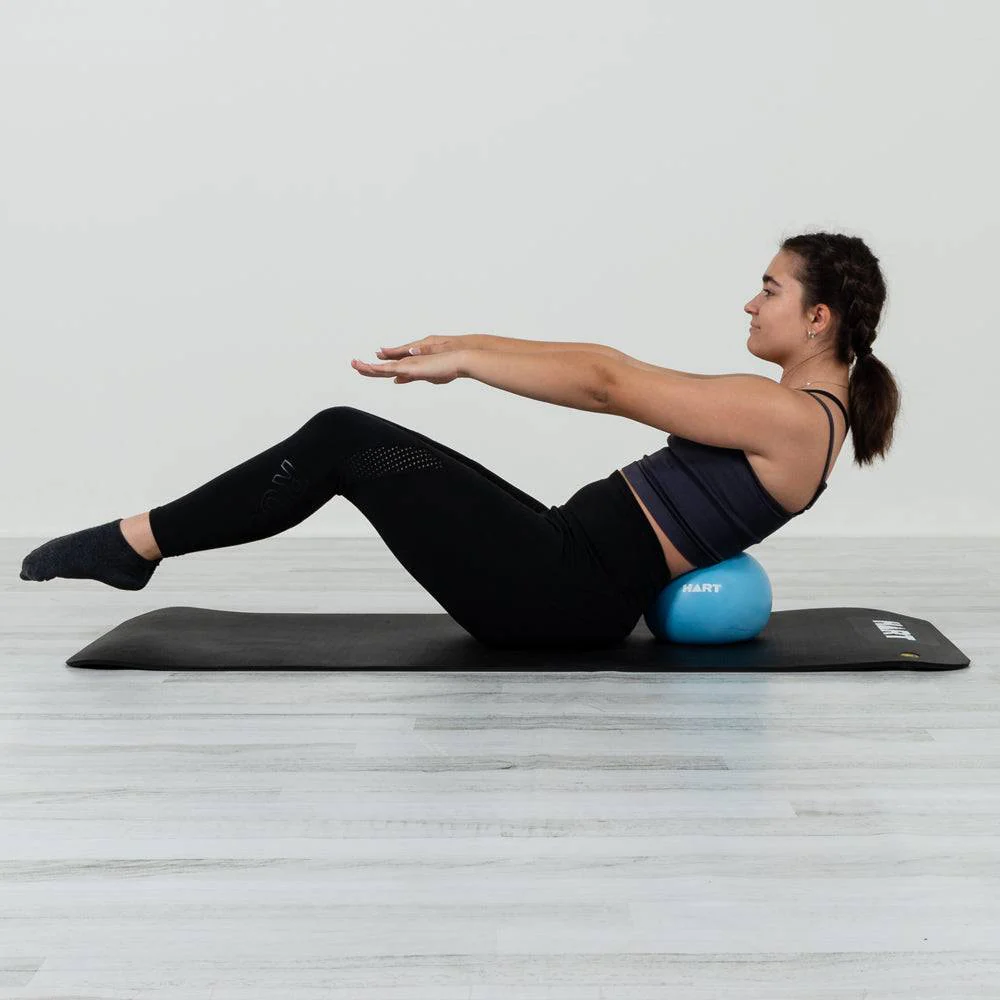In recent years, the popularity of Pilates has surged, with many people embracing its numerous benefits for strength, flexibility, and balance. One of the most versatile tools in a Pilates practitioner’s arsenal is the small Pilates ball. This simple yet effective piece of equipment can enhance balance work significantly, leading to improved core stability and overall body awareness. Here, we explore five effective ways to incorporate a small Pilates ball into balance exercises, ensuring a comprehensive workout that challenges both the body and mind.
1. Core Activation and Stability
Understanding Core Engagement
The core is the foundation of all movement, and activating it is crucial for maintaining balance. When using a small Pilates ball, the engagement of core muscles becomes more pronounced. By incorporating the ball into your routine, you can create instability, forcing your core to work harder to maintain balance.
To begin, lie on your back with your knees bent and feet flat on the floor. Place the small ball between your knees and squeeze it gently. As you engage your core, lift your head, shoulders, and upper back off the mat. Hold this position for a few seconds, then lower back down. This simple exercise not only strengthens the core but also enhances stability, which is essential for balance. Engaging the core in this manner activates the transverse abdominis, a deep muscle that plays a pivotal role in stabilising the spine and pelvis during movement, thus reducing the risk of injury in daily activities.
Adding Variations
Once you’re comfortable with the basic core activation exercise, variations can be introduced to increase the challenge. For instance, try extending your legs while holding the ball between your knees. This modification requires greater core engagement and balance, as the centre of gravity shifts. As you extend your legs, be mindful of maintaining a neutral spine; this will ensure that you are not placing undue stress on your lower back. The added challenge of leg extension not only engages the core more intensely but also activates the hip flexors, contributing to overall lower body strength.
Another effective variation is the ball pass. Start in the same position with the ball between your knees. As you lift your upper body, simultaneously extend your legs out and pass the ball from your knees to your hands. This dynamic movement not only works the core but also improves coordination and balance. The ball pass encourages the integration of upper and lower body movements, fostering a sense of fluidity in your exercise routine. As you become more proficient, consider increasing the speed of the pass or incorporating a twist in your torso to further engage the obliques, which are vital for rotational stability and strength.
2. Enhancing Balance with Standing Exercises
Incorporating the Ball into Standing Poses
Standing exercises are excellent for developing balance, and using a small Pilates ball can elevate these movements. One effective exercise is the single-leg stand. Begin by standing tall with the ball held in front of you. Shift your weight onto one leg and lift the opposite leg off the ground, bending the knee. Hold the ball out in front of you, and focus on maintaining your balance.
As you become more stable, try closing your eyes or moving the ball side to side. This added challenge forces your body to engage stabilising muscles, enhancing your overall balance and proprioception.
Dynamic Movements for Increased Challenge
For those looking to further challenge their balance, dynamic movements can be introduced. Stand on one leg while holding the ball above your head. Slowly lower the ball to one side, then return it to the starting position. This movement not only works on balance but also engages the obliques and improves coordination.
Another dynamic exercise involves a forward lunge while holding the ball. Step forward with one leg into a lunge position, lowering the ball towards the ground. This exercise requires balance and control, making it an effective way to incorporate the small Pilates ball into your standing routine.
In addition to these exercises, consider integrating rotational movements to further enhance your core stability. For instance, while standing on one leg, you can twist your torso to one side, holding the ball at chest level, then return to centre and repeat on the opposite side. This not only challenges your balance but also promotes flexibility in the spine and engages the core muscles, which are essential for maintaining stability during various activities.
Moreover, incorporating breathing techniques while performing these exercises can significantly improve your focus and control. As you hold the single-leg stand, practice inhaling deeply through your nose, allowing your abdomen to expand, and exhaling slowly through your mouth. This mindful approach not only enhances your physical performance but also fosters a deeper connection between your mind and body, which is crucial for mastering balance and coordination.
3. Incorporating the Ball into Floor Exercises
Floor Work for Improved Stability
Floor exercises provide an excellent opportunity to utilise the small Pilates ball for balance work. One effective exercise is the bridge with the ball. Lie on your back with your feet resting on the ball. As you lift your hips into a bridge position, the ball will roll slightly, challenging your stability and engaging your core.
To increase the difficulty, try lifting one leg off the ball while maintaining the bridge position. This variation forces your body to work harder to maintain balance, enhancing core strength and stability. Additionally, you can incorporate arm movements by extending one arm overhead while keeping the other at your side, which further engages the core and improves coordination. This multi-dimensional approach not only builds strength but also promotes better body awareness, making it a valuable addition to your workout routine.
Utilising the Ball for Side-Lying Exercises
Side-lying exercises can also benefit from the addition of a small Pilates ball. Lie on your side with the ball positioned between your ankles. As you lift your top leg, the ball will create instability, forcing your stabilising muscles to engage. This exercise not only improves balance but also targets the hip abductors, which are essential for overall stability.

For an added challenge, try lifting your top leg and holding it in the air while squeezing the ball. This is a great way to enhance balance and strengthen the hip area simultaneously. Furthermore, you can introduce variations such as circles or leg lifts to increase the intensity of the workout. By moving your leg in a circular motion while maintaining the squeeze on the ball, you activate different muscle groups and improve mobility in the hip joint. These exercises can be particularly beneficial for athletes or individuals looking to enhance their performance in activities that require lateral movement and agility.
4. Using the Ball for Stretching and Flexibility
Improving Flexibility with the Ball
Flexibility is a vital component of balance, and the small Pilates ball can aid in stretching exercises. One effective stretch is the seated forward fold. Sit on the floor with your legs extended in front of you. Place the ball on your feet and gently roll it towards your body as you reach forward. This movement not only stretches the hamstrings but also encourages balance and control as you engage your core.
Another beneficial stretch is the seated twist. Sit on the floor with your legs crossed and the ball in front of you. Place your hands on the ball and gently twist your torso to one side, using the ball for support. This stretch enhances spinal flexibility and engages the core, promoting better balance.
Dynamic Stretching for Improved Range of Motion
Dynamic stretching can also be incorporated with the small Pilates ball for a more active approach. Stand tall and hold the ball above your head. As you lower the ball to one side, engage your core and maintain your balance. This movement not only stretches the sides of your body but also challenges your stability.
Additionally, try rolling the ball along the floor while in a lunge position. This dynamic stretch promotes flexibility in the hips and hamstrings while requiring balance and coordination. Such movements are excellent for warming up before a workout or cooling down after a session.
5. Integrating the Ball into Group Classes
Enhancing Group Workouts
For Pilates instructors and enthusiasts alike, incorporating the small Pilates ball into group classes can elevate the experience for participants. Group workouts allow for the sharing of ideas and techniques, and the ball can be used in various exercises to enhance balance and engagement.
Consider setting up stations where participants can rotate through different exercises using the ball. This not only keeps the class dynamic but also allows individuals to challenge themselves at their own pace. Having the ball as a shared tool encourages teamwork and camaraderie, making the workout more enjoyable.
Creating a Balanced Routine
When integrating the small Pilates ball into group classes, it’s essential to create a balanced routine that targets various muscle groups while focusing on balance. Incorporate a mix of standing, floor, and stretching exercises to ensure a comprehensive approach.
Encourage participants to communicate and support one another as they navigate the challenges of balance work with the ball. This collaborative environment fosters motivation and accountability, leading to a more fulfilling workout experience.

Conclusion
Incorporating a small Pilates ball into balance work offers a multitude of benefits, from enhancing core stability to improving flexibility and coordination. By utilising the ball in various exercises—whether standing, on the floor, or in a group setting—individuals can challenge themselves and develop a greater sense of body awareness.
As with any exercise routine, consistency is key. Regularly incorporating these techniques into workouts can lead to significant improvements in balance and overall fitness. Whether you’re a seasoned Pilates practitioner or a newcomer, the small Pilates ball is a valuable tool that can elevate your practice and enhance your physical capabilities.
Embrace the versatility of the small Pilates ball and explore the endless possibilities it offers for balance work. With dedication and creativity, achieving improved balance and stability is within reach.
See Also: Why a Pilates Ball is essential for at-home core training.


Leave a Reply